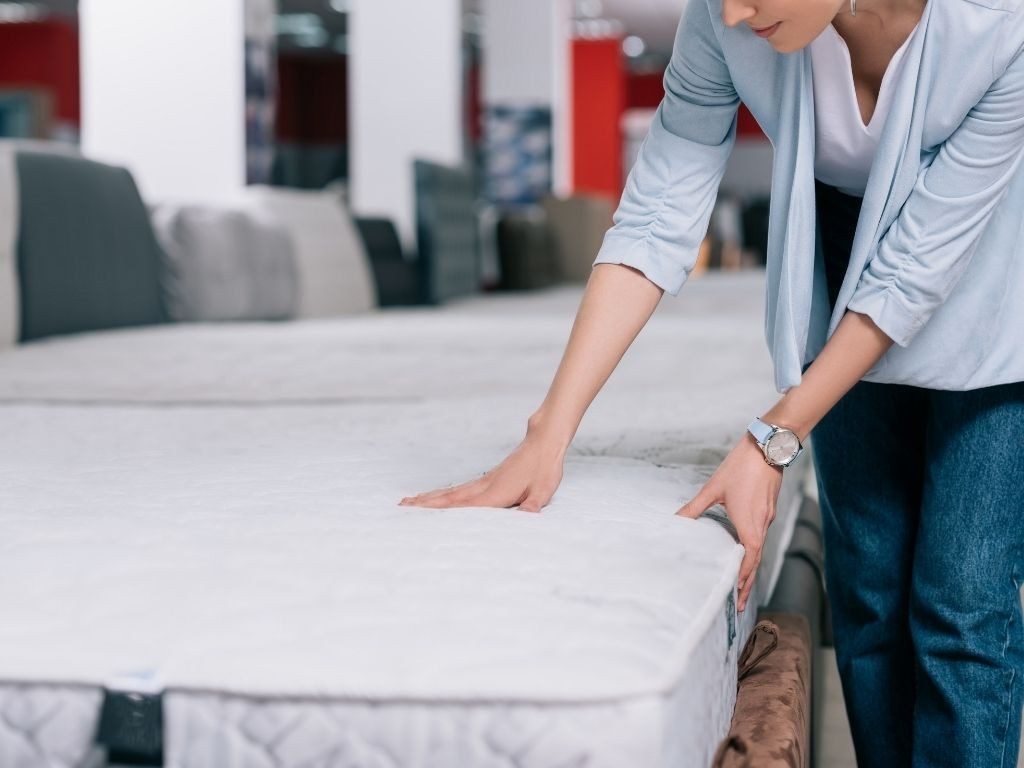Last Updated on July 13, 2024 by Asfa Rasheed
A bad night’s sleep can be blamed on a noisy neighbour, your snoring partner or a late-afternoon cup of coffee or glass of wine. All of this may be true, but the underlying culprit for your lack of sleep may be hiding right in plain sight—or in this case, on your back.
You’re having trouble sleeping, but you’re not sure if it’s because of your mattress or your snoring bed companion. It is important to pay attention to various indications, some of which can be seen by simply looking at your mattress, while others can only be felt.
To learn more about the warning symptoms of a defective mattress, continue reading. One or more of the following may signify that you need a new mattress to help you get a good night’s sleep.
Our selection of mattresses at mattress store Tucson has something for everyone and is sure to leave you feeling well rested after a night’s sleep. They are made with your comfort and proper support in mind.
Table of Contents
Mattresses are the first thing you should look for while shopping online.
- A Tired Feeling Is Waking You Up in the Morning Despite getting eight hours of sleep, you still feel as if you’ve slept none at all. Does this sound all too familiar? There are far too many of us who do this, and it’s certainly not the way we want to start our days.
Even if you’ve slept for eight or eighteen hours, it doesn’t seem to make any difference. It’s possible that your body isn’t getting the restorative sleep it needs if you’re sleeping on a terrible mattress. To rule out any other possible sources of your poor sleep quality, consider the following list of poor sleep hygiene before blaming your mattress for good.
A poor diet can cause stomach discomfort, excessive gas and digestive disorders that can interfere with a good night’s sleep, all of which are detrimental to a good night’s rest.
Getting enough exercise, or not getting enough, can affect your sleep cycle. An vigorous workout right before bed may overstimulate you and have the opposite effect as compared to a daily exercise routine that is moderate in intensity.
Getting ready for bed — Excessive blue light exposure, caffeine late in the day, alcohol in the evening, and more are all activities that should be avoided before bedtime.

If you’re having trouble sleeping, it’s important to know that there are many other sleep disorders that could be to blame. It’s time to check your mattress if none of the above are the cause of your issue. It is possible that your body is trying in vain to find a comfortable sleeping posture if you are tossing and turning all night long. If you can’t find a place to curl up in, it’s probably time for a new mattress.
You’re Having a Difficult Time Sleeping.
A good night’s sleep is essential for overall health and well-being, and a comfortable mattress is crucial for achieving it. A bad mattress can lead to sleepless nights, back pain, and other health issues. If you’re experiencing any of these issues, it may be time to examine your mattress.
The sleep soundtracks you’ve tried aren’t working, so you’ve decided to cut back on screen usage an hour before bed. After all, you’ve tried everything you can think of. Even if you’re an expert at deep breathing, if your mattress isn’t supporting your spine or giving your body the level of firmness it requires, falling asleep may seem like an insurmountable challenge.
A typical night’s sleep for adults is between 10 and 20 minutes. If you frequently need an hour or more to sleep, you may want to take a closer look at your bed and experiment with some sleep hacks.
You’re Sneezing a Lot
Pollen is a common allergen, but if you’re prone to sneezing, blowing your nose, or getting annoyed by itchy eyes, it might not be the cause. Dust mites, a common household allergy, could be to blame instead.
A scratchy throat, a rash on the skin, and postnasal drip can all be caused by these microscopic organisms that like to burrow into warm, humid locations like sofas and mattresses.
Dust mites can be avoided by using our mattress. Breathable Mattress Protector on top of your standard mattress. This will keep out all sorts of pesky bugs and irritants. This will keep you cool and comfortable while protecting you from dust mites.
You’ve Been Sleeping on the Same Mattress for More Than Ten Years
While some mattresses survive longer than others, how long should a mattress be expected to last? Others may degrade in quality after seven years, while they are built to last at least that long. While mattress protectors are a great method to extend the life of your mattress, if it’s been decades since you last bought a new one, it’s time to consider an upgrade.
You want your mattress to last a long time. Take the following precautions:
- Clean your bedding on a regular basis.
- Protect your mattress by using a mattress protector or pad.
- Every three months, you should flip your mattress.
- Restrict the time your pet spends sleeping on your bed.
- A sturdy bed frame or box spring is essential if you want to prevent your mattress from swaying as you sleep.
You’re Feeling Pain and Aches.
Is it possible for a mattress to induce aches and pains in the body? I think so. It’s possible that your mattress is to blame for your lingering neck and back ache when you wake up in the morning. Your mattress may lose its firmness, support, and structure with time, preventing you from getting a decent night’s sleep.
It’s also possible that your sleeping patterns and mattress firmness have been out of sync from the beginning. Mattresses that are either too hard, too soft, or don’t provide enough support for your hips, waist, lower back or upper back may be time to look for a more ergonomic design that provides better quality sleep from the foundation up. The first step in picking between a plush and firm mattress is identifying your specific sleeping requirements. The next step is to locate a mattress with different zones of support.
Your mattress seems and feels unevenly distributed.
As soon as you notice that your mattress is bumpy rather than equally cushioned, it’s time to get a new mattress. Even if you can’t see it, you’ll be able to feel the difference as soon as you lie down on it. While it is possible to find a flat spot in the middle of your bed, it is not always possible to do so without sinking into the middle of your mattress.
Quick Overview To More Symptoms
Here are some obvious signs and symptoms of a bad mattress.
- Sagging: If your mattress has visible indentations or sagging areas, it’s a sign that it’s lost its firmness and support. This can cause discomfort and back pain.
- Lumps and bumps: If you feel lumps or bumps on your mattress, it’s a sign that it’s worn out and unable to provide adequate support. This can lead to discomfort and disturbed sleep.
- Squeaking or creaking: If your mattress makes noise when you move, it’s a sign that the springs are worn out or damaged. This can lead to disturbed sleep and discomfort.
- Allergies and respiratory problems: If you wake up with allergies or respiratory problems, it could signify that your mattress is old and harbors dust mites and other allergens.
- Insomnia: If you’re having trouble falling asleep or staying asleep, it may indicate that your mattress is uncomfortable and no longer provides the support you need.
In conclusion, a bad mattress can lead to various health issues, and it’s crucial to identify the signs and symptoms early to avoid further complications. If you’re experiencing any of these symptoms, it may be time to consider replacing your mattress.
Your sleep and your health may suffer if you experience this, which is the mother of all terrible mattress symptoms.
Read More: Essentials T-Shirt Shop
























